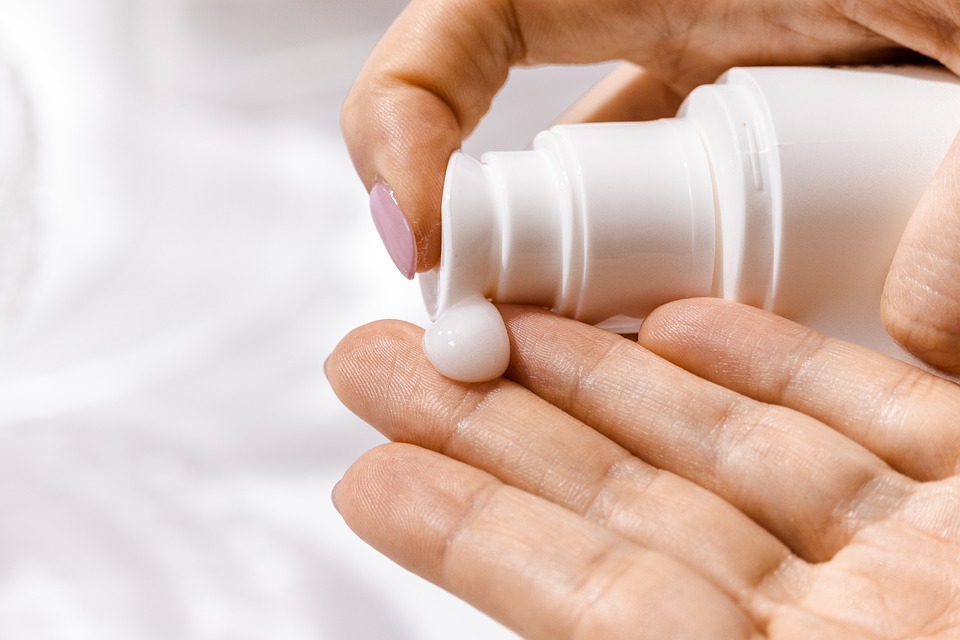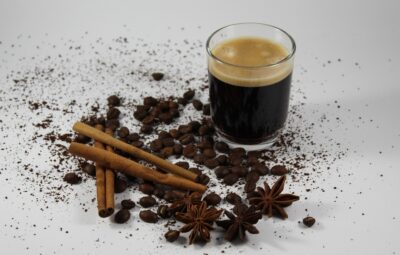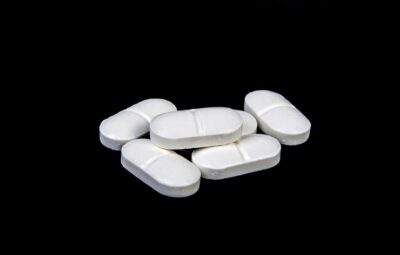The skin on the back of the hands can show signs of aging, such as wrinkles, dryness, and sagging. The physical changes that happen to your body over time are affected by many factors, including your lifestyle choices. You can take steps to prevent or delay some of these changes and, in some cases, even reverse them.
Understanding How Skin Ages
As we age, our skin cells’ ability to produce the energy needed for DNA repair and cell renewal decreases. The level of internal antioxidants in our body, such as superoxide dismutase (SOD) and catalase, also decreases over time. The damage caused by free radicals to the lipid bilayer that covers our skin cells is cumulative and is caused by factors such as ultraviolet light, smog, cigarette smoke, X-rays, and drugs. The constant oxidative stress also makes the fatty cell membranes more permeable, causing our skin to gradually lose moisture and become dehydrated.
As we age, our bodies produce less of the essential fatty acids that our skin needs to stay hydrated. The skin’s ability to retain moisture is directly related to its content of NaPCA. NaPCA is a natural moisturizer for the skin that helps it stay hydrated by absorbing water from the air. The amount of NaPCA in the skin decreases by half as skin ages, which amplifies the negative effects of dehydration.
Free-radical damage to collagen is the primary cause of sagginess and wrinkles in aged skin. Normal, healthy collagen proteins work together to give the skin its softness and elasticity. The damage caused by free radicals makes the collagen protein molecules break down and re-link in a different way, in a process known as cross-linking. This makes the normally supple collagen become stiff and hard. If collagen fibers are unable to hold water, they will shrink, and this will cause wrinkles on the skin.
Age spots, another common skin feature associated with aging, are caused by specialized skin cells known as melanocytes, which make up about 8-10% of the epidermal skin cells. Melanocytes are cells in the skin that produce melanin, the pigment that gives skin its color. They also help protect the skin by absorbing ultraviolet light and scavenging harmful free radicals. As people age, the number of melanocytes (cells that produce color in the skin) decreases, and these cells often group together, causing brown or black patches on the skin.
Antioxidants Repair and Rejuvenate Skin
The aging process and its negative effects on your skin seem to be never-ending and unavoidable, but there are some natural substances that have been proven by science to help the repair mechanisms of skin cells and improve their ability to heal.
One group of compounds that effectively counteract the damaging effects of free radicals is antioxidants. These include vitamins C and E, beta-carotene, and selenium. Applying antioxidants to the skin protects it from free radicals and reverses some signs of aging. ,5 Several studies on animals and humans have shown that antioxidants with low molecular weight, such as vitamin E and alpha-lipoic acid, can protect against free-radical damage.
Topical vitamin E, especially alpha-tocopherol, can help reduce the appearance of wrinkles and rough skin. One study found that alpha-tocopherol can effectively scavenge free radicals, which can otherwise damage and destroy collagen fibers.
Alpha-lipoic acid is an antioxidant that has a range of benefits and increases the effectiveness of other antioxidants. Found in the mitochondria that generate the energy required for DNA repair and cellular renewal, alpha-lipoic acid is a type of acid that is soluble in both water and fat, and augments cellular metabolism. Alpha-lipoic acid inhibits the activation of nuclear factor-kappa b, a transcription factor that regulates genes involved in inflammation.
The protein AP-1 can have opposite effects on the skin depending on how it is activated. When AP-1 is hit with ultraviolet light, it causes extensive free-radical damage. If activated by alpha-lipoic acid, AP-1 will turn on enzymes that will only damage collagen.
As skin ages, sugar molecules bind more tightly to proteins and form abnormal structures known as advanced glycation end products. This makes tissues progressively less elastic. Alpha-lipoic acid effectively slows down the process of glycation and, by activating AP-1, produces skin that is smoother and firmer.
Red tea extract induces superoxide dismutase activity to a much greater extent than green tea, leading to stronger antioxidant effects. ate. Red tea extract contains natural antioxidants, such as vitamins C and E and beta-caproate, which protect the body.
Moisturizers Soften Dry, Rough Skin
Another group of nutrients that are important for healthy skin are natural hydrating agents that help to prevent the skin from drying out. Hyaluronic acid is an important molecule found in every tissue of the body, especially in areas with a lot of collagen.
The network of collagen fibers just below the skin contains a jelly-like mixture of water, protein complexes, and hyaluronic acid. This mixture helps transport essential nutrients from the bloodstream to the living cells of the skin. Water plays an important role in hyaluronic acid’s properties. Because of free radicals, half of our hyaluronic acid is gone by age 50. Replenishing the skin with hyaluronic acid can promote healing, repair, and antioxidant activity. Hyaluronic acid can also provide volume and fullness and is crucial in maintaining smoothness and moisture in the skin.
Skin Solutions for Aging Hands
To reduce the appearance of aging on the hands, COSMESIS Skin Care has created a product called Anti-Oxidant Rejuvenating Hand Cream that contains the various compounds discussed in this article. This skin cream is also formulated with grape seed oil, orange flower, chamomile, and sage to improve your health. It can help reduce the appearance of aging on the back of the hands, such as dry, veiny skin and unwanted pigmentation, discoloration, and age spots.
This hand cream is mild enough to be used along with other skin treatments or products. To get the best results from the cream, apply it once or twice a day to the back of your hands. This will help to smooth and nourish your skin, lighten age spots and discoloration, lessen the appearance of unsightly veins, and decrease wrinkles.
Using Sun Gloves
Sun Gloves and Their Features
Your hands are exposed to the sunlight for extended periods of time when you are driving, fishing, camping, hiking, or even just walking outdoors with a friend. The harmful UV rays that are absorbed by the skin can have a negative influence on the condition of the skin and can cause the aging process to happen more quickly.
UPF
Sun gloves are designed to protect your skin from harmful UV rays. The fabric used in sun gloves is usually more effective than regular fabric in blocking UV rays. This fabric has a high level of UPF, which means that it blocks most UV rays. Only 2% of the rays are able to pass through the fabric. This means that UPF 50+ provides the same level of protection as an SPF 50+ sunscreen. For a more detailed understanding of UPF, please see our article about understanding the differences between UPF and SPF.
Design
Sun protective gloves usually come complete or fingerless. Many people prefer fingerless gloves as they allow the fingers to remain free while still providing protection for the back of the hand from sunburn and keeping the hands cooler than if they were wearing gloves that cover the fingers, which often cause excessive sweating and less grip. Fingerless gloves allow you to retain dexterity and a strong grip on items such as a fishing pole. The gloves are perfect to wear when getting your nails gel polish as only the tips of the fingers will be exposed to the UV light.
Fabric
The best thing about sun protective gloves is that they are super comfortable and barely noticeable on your hand.
Cooling Feature
With these gloves, you can protect your hands from the sun without worrying about them getting too warm or sweaty. Gloves that are designed to keep your skin cooler are the best to use in the sun. Just dipping the fabric in water will make it absorb moisture and cool your skin.
Portability
Gloves that provide sun protection are also easy to take with you wherever you go. They are small enough to take with you wherever you go, easily fitting in your purse or pocket. They are easy to fold and very portable so you can take them with you on every trip, even if its a short drive to the neighborhood store. One sign of aging that is often overlooked is the sun damage that your hands can sustain just from holding the steering wheel. IMAGE OF AGING HANDS
Washing
Sun gloves are also easy to maintain. Hand washing with mild soap and air drying every so often is all that is required to care for these items. You may also spot clean as needed.
Men and Women
There is a wide range of sun gloves available for both men and women. In most cases, they are unisex. The average man will probably need a size Large, while the average woman will be medium unless they have above or below-average-sized hands.
The Benefits of Sun Protective Gloves
Effectiveness
Sunscreen is not as effective as sun protective gloves. Even when the UPF and SPF factors are respectfully the same, the difference between sun gloves and sunscreen is the ease of use, the likelihood you will remember to reapply (and how effective you reapply the layer of sunscreen) as well as if sunscreen interrupts with your activity (such as skewering kabobs-who wants minerals or chemicals on their hands while doing that or holding a fishing pole with slippery sunscreened hands).
Younger Skin
Having your skin exposed to the sun can negatively affect its condition. Did you know that your hands can reveal your age? The main factor that contributes to aging hands is exposure to UV rays. Sun protective gloves help to keep the skin on your hands from exposure to the sun, helping to keep it younger and healthier for a longer period of time.
It’s Cool
We don’t mean “cool” as in sharp but in the literal sense. Wearing sun-protective gloves can help you stay cooler on a sunny day by eliminating sweating and preventing your hands from getting uncomfortable or developing a rash or blisters. There are certain fabric technologies and water-wicking processes that can help you stay cool. Even though the design you choose might not be stylish, you can still look cool by choosing other components that are stylish.
Dermatologists Approve
IMPORTANT: Wearing sun-protective gloves shields your skin from harmful ultraviolet (UV) rays. Sunscreen can rub off, lose its effectiveness through perspiration, or just wear off after a set amount of time, so sun protective gloves are recommended. These products are particularly useful for people with sensitive and delicate skin.
Durable
Sun gloves are made of strong but thin material and can serve you for many uses. They don’t lose quality or sun protection when washed. The way most sun gloves are woven very tightly blocks out UV rays, making them protective. This is not because of chemical treatment. In other words, unless the threads are starting to come undone and the rope is getting weaker, it won’t lose its effectiveness from use. Investing in sun protective gloves can help keep your skin healthy, preventing the need for expensive sun spot removal and skin damage treatments later. This can help keep your hands looking young and healthy. Those with a higher susceptibility to skin cancer or photosensitivity, like Lupus, can rest assured that they are protecting their hands from such issues.
Suitable for Every Occasion
You can use sun-protective gloves anywhere you go. A day spent outdoors can involve any number of activities, from hiking and camping to hunting and fishing or simply relaxing at the beach. This product is especially useful when hunting or fishing since your hands are exposed to sunlight for long periods of time (usually not moving). You don’t have to worry about reapplying sunscreen if you’re wearing sun gloves. This can be extremely convenient, especially if you’re in the middle of something or working with dirty materials or food.







